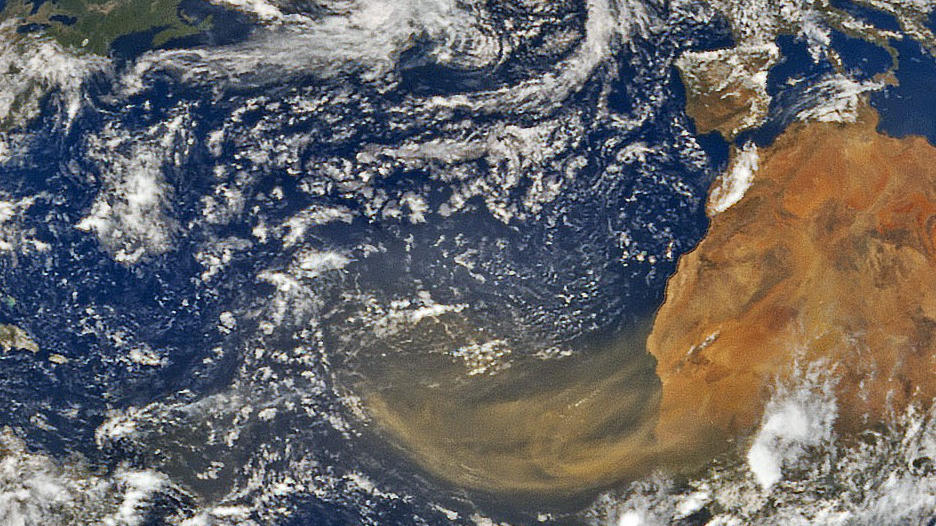The much-anticipated Saharan dust plume is now making its more than 5,000-mile trek across the Atlantic to the United States.

The thick dust is clearly visible on satellite imagery, too. You can make it out by the brown sheen spreading off the African coast. It’s so dense it’s making it almost hard to tell where the continent ends and the ocean begins!
Forecast models call for this swath of dust, straight from the Saharan Desert and carried by the east-to-west Trade Winds, to arrive in the Southeast U.S. beginning on Wednesday of this week.
Saharan dust plumes are not special to the year 2020 however, they do happen often. However, sometimes the wind is just right and when the dust plume is large enough and trade winds set up just right, the dust can travel thousands of miles across the Atlantic and blow across the United States.
Here is what you can expect this coming week from the dust plume over the United States.

The top three things you can expect to see and ‘feel’ from the plume are:
A difference in the sky. As the plume comes across America, the blue skies will fade and the sky will have a ‘milky’ haze to it. That milky haze…that’s the dust! Millions upon millions of tiny dust particles will dance in the sky, tens of thousands of feet up, scattering the sun’s rays. This will give off an incredible affect during sunsets and sunrises.
Less tropical activity in the Atlantic.
The Saharan dust to a hurricane is nothing more than extremely dry air. Hurricanes hate dry air! A hurricane needs a hot, humid and calm environment.
As long as the Saharan dust is around … it’s likely you’ll see the National Hurricane Center watching fewer areas in the tropics.
Dust plume allergies. The tiny dust particles may give way to incredible views and calm hurricanes, but they won’t calm your allergies. Not all dust particles stay 30,000 plus feet in the air, some make their way down to the Earth’s surface. This results in increased allergies.





